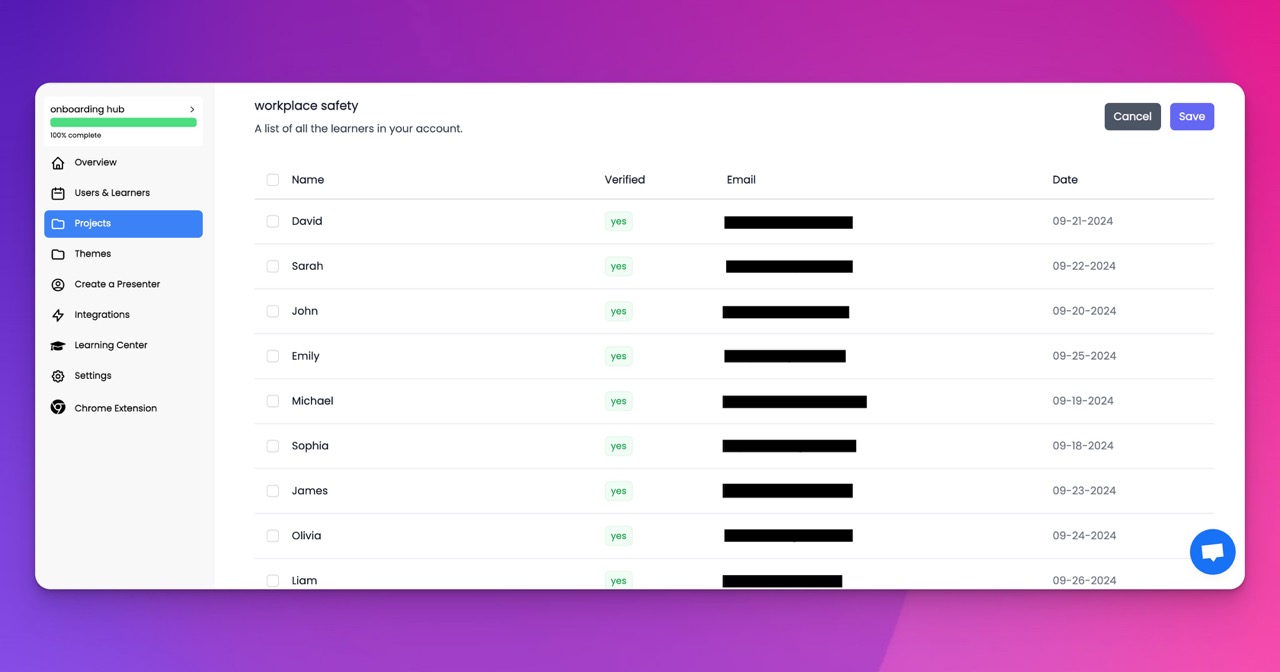🎉 Trainday now integrates with Zendesk and Hubspot 🎉 Trainday now integrates with Zendesk and Hubspot 🎉 Trainday now integrates with Zendesk and Hubspot
🎉 Trainday now integrates with Zendesk and Hubspot
🎉 Trainday now integrates with Zendesk and Hubspot
Contact
Cybersecurity
The Role of Competitive Intelligence in Cybersecurity Employee Retention
Leveraging Data and Artificial Intelligence for Effective Employee Training in Cybersecurity
In the rapidly evolving landscape of cybersecurity, organizations face a constant challenge of retaining skilled professionals. With the increasing number of cyber threats and the growing demand for security experts, employers must invest in innovative strategies to retain and upskill their employees. Competitive intelligence, combined with data analytics and artificial intelligence (AI), can play a pivotal role in creating relevant employee training courses in a fast-paced environment. This blog post examines the significance of competitive intelligence in cybersecurity employee retention and explores how data and AI can be leveraged to develop timely and effective training programs.
Understanding Competitive Intelligence in Cybersecurity:
Competitive intelligence refers to the practice of gathering and analyzing information about competitors, market trends, and emerging technologies to gain a competitive advantage. In the realm of cybersecurity, competitive intelligence helps organizations identify skills gaps, benchmark against industry standards, and proactively address emerging threats. By leveraging competitive intelligence, companies can align their training initiatives with market demands, thereby enhancing employee retention and overall cybersecurity posture.
Harnessing Data for Training Course Development:
Data analytics plays a crucial role in understanding the specific areas of improvement and skill gaps within an organization. By collecting and analyzing employee performance data, companies can identify the most critical training needs. This data-driven approach allows organizations to prioritize training topics, allocate resources efficiently, and tailor courses to meet the unique requirements of their workforce.
Moreover, leveraging data analytics can help identify patterns and trends in cyber threats, allowing organizations to develop targeted training programs that address emerging risks. By using historical attack data, organizations can simulate real-world scenarios and train employees to detect, prevent, and respond effectively to evolving cyber threats.
Integrating Artificial Intelligence for Fast and Relevant Training:
The use of AI in cybersecurity training is revolutionizing the way organizations develop and deliver courses. By harnessing AI-powered platforms, organizations can automate the creation of training materials, ensuring that information remains up-to-date and relevant. AI algorithms can analyze vast amounts of data from various sources, such as industry reports, research papers, and threat intelligence feeds, to generate timely and accurate training content.
Additionally, AI-powered platforms can personalize training programs based on individual employee needs. By considering factors like skill level, experience, and job role, AI algorithms can recommend tailored training modules that address specific knowledge gaps. This personalized approach not only improves employee engagement but also facilitates faster skills development.
Benefits of Data and AI-Driven Employee Training:
1. Enhanced Employee Engagement: Data-driven training courses tailored to individual needs foster higher engagement levels among employees, leading to better knowledge retention and overall job satisfaction.
2. Real-time Adaptability: By continuously analyzing data on emerging threats, organizations can swiftly update their training programs, ensuring employees stay equipped with the latest knowledge and skills.
3. Improved Cybersecurity Posture: Targeted training programs enable employees to identify and mitigate emerging threats effectively, thus strengthening an organization's cybersecurity defenses.
4. Cost and Time Efficiency: Utilizing data and AI streamlines the course development process, reducing the time and resources required for training initiatives.
Conclusion:
In the face of an ever-evolving cyber threat landscape, organizations must prioritize employee retention and upskilling to maintain a strong cybersecurity posture. Competitive intelligence, coupled with data analytics and AI, enables organizations to develop relevant and fast-paced training courses that address specific skill gaps and emerging threats. By harnessing the power of data and AI, organizations can enhance employee engagement, improve their cybersecurity posture, and stay ahead of adversaries in this dynamic field.
Accelerate Compliance.
Deliver OSHA-Ready Courses Instantly.
Empower your team with data-driven training solutions tailored to your industry's safety standards. Stay compliant, reduce risks, and boost productivity with AI-powered course creation.
